Evan
Forum Replies Created
- AuthorPosts
-
Anyone happen to know the manufacturer of the Penta woofer? It’s marked J82TNI and B&O part number 8480197. Very few hits from a quick google search.
Interesting to note – the basket is not vented below the spider. Bit of a odd feature for a home / hi-fi speaker.
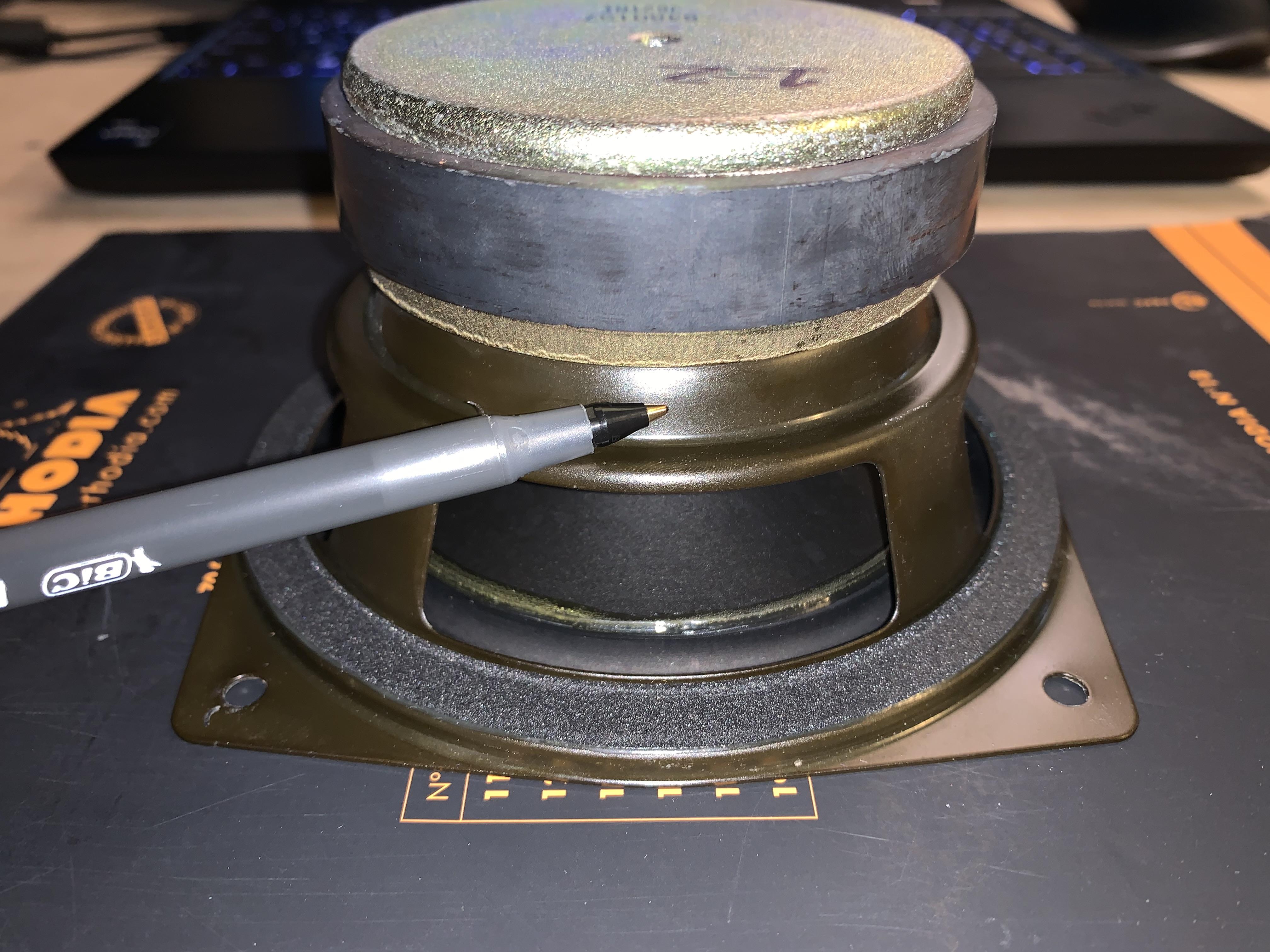
I really hope you guys like engineering details. I’m going to put one of the woofers and one of the mids (once refoamed) through the Klippel measurement at work and report back. It will be interesting to see how these drivers measure and how they compare to modern transducers.
This is news to me. Some Beo4s can do this and some cant?
I performed the region change on a DVD2 a few years ago with the Beo4 that I was just using at the time on a daily basis. I suppose the good news here is that I still have this Beo4 (I think!).
Do the instructions above for the 7-32/7-40 also work on 7-55 mk1? I will have to perform the region change myself soon.
Some interesting notes from the donor pair:
Type 6611 / serials 06574475 & 06574459
The midrange transducers had no gaskets to the baffle whatsoever and many screw heads already loose. Maybe someone was already in these speakers before?
Most interestingly, these seem to have been originally sold in China as there is some sort of import sticker underneath. One was scribbled out but the other was intact enough to run through google translate:
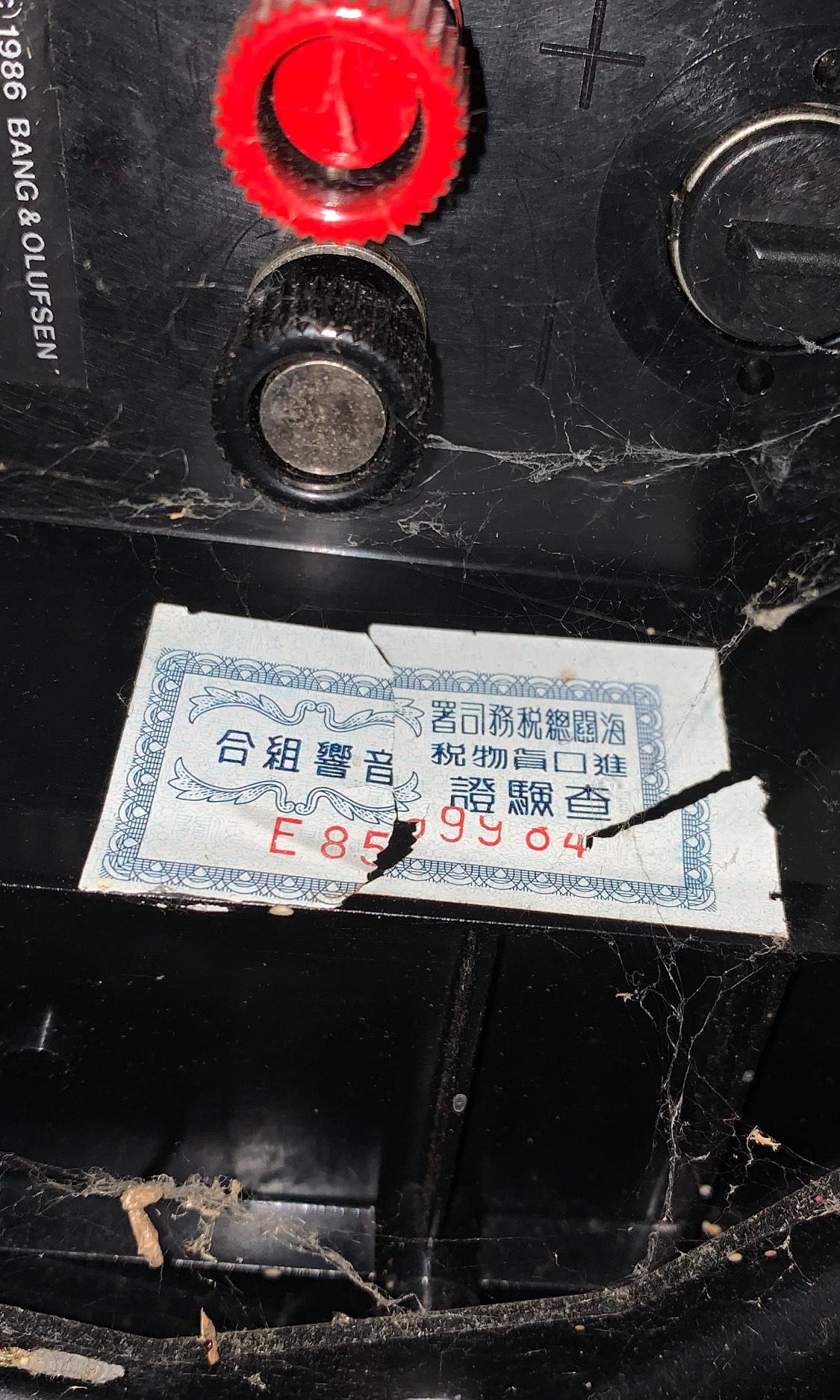
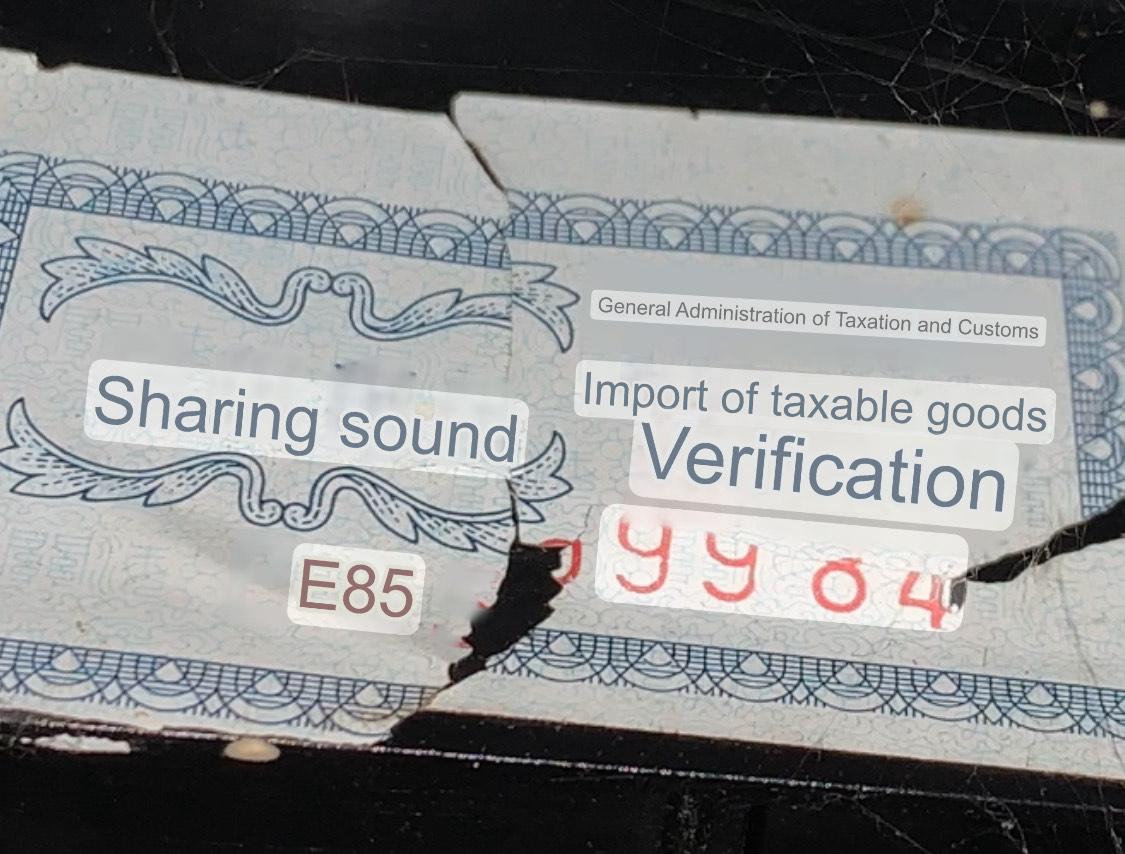
Fascinating that these speakers built in Denmark made their way to China and then to California. Explains their condition for sure!
Managed to get another chunk of progress out of the way for this project: I just scored some donor BeoVox Pentas locally off CL. These things have been through some traumatic previous ownership at some point but should be able to give me what I need to build at least one good Centa. Going to have to get parts ordered for it so I can get it up to snuff for a few specific measurements I need to make.
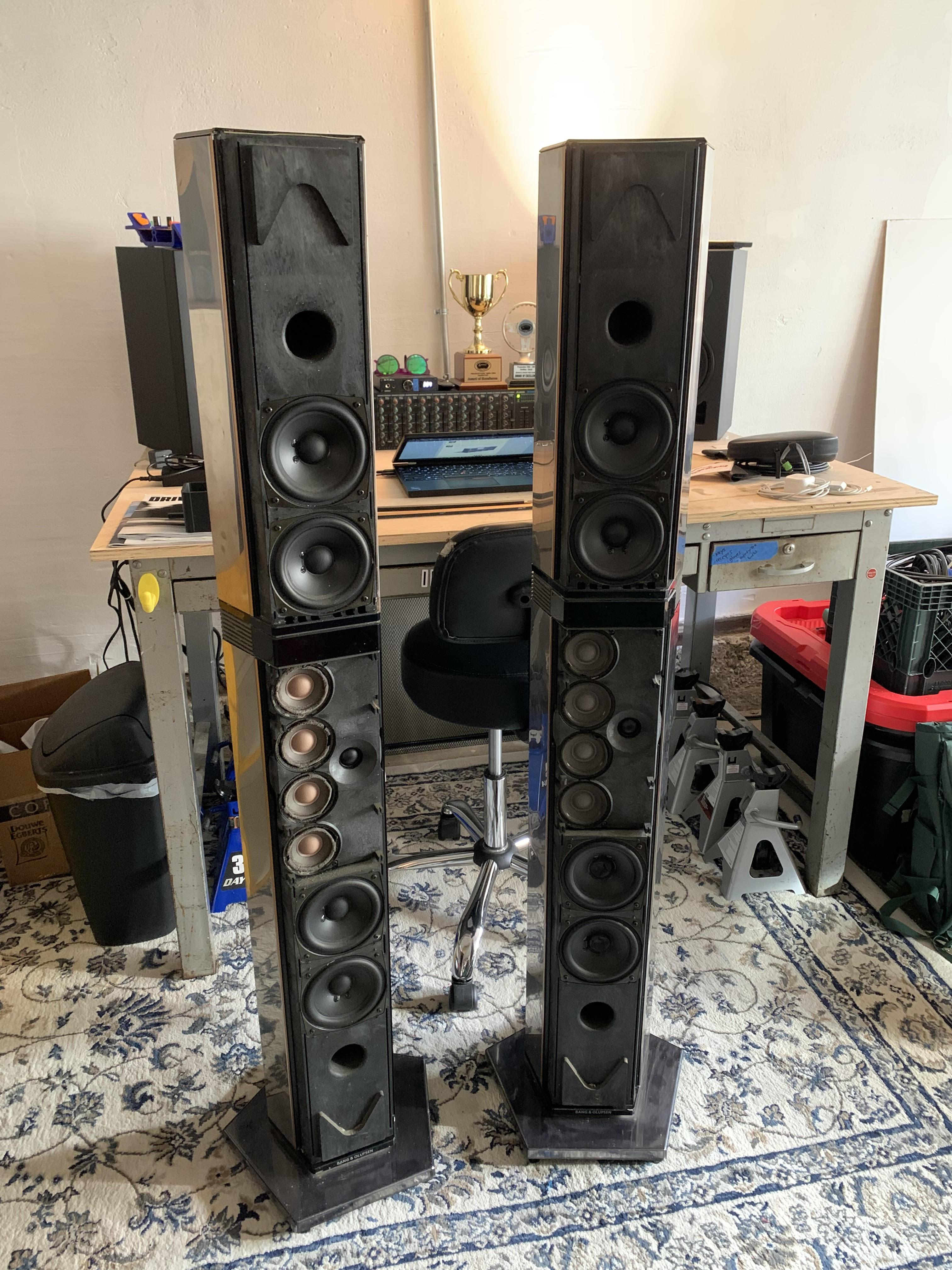
They are perfect for this project honestly, I should be able to use these for reverse engineering for most of the journey and can reference the other Pentas in my collection if necessary.
What a difference the amp makes by the way. So much shorter and lighter!
Centa Penta, surely!Hahaha genius! Centa Penta it is!Ok I guess the first step (in the modeling domain) is to get the Kallax into Solidworks. I’ll build the Penta-C(?) / Center Penta(?) What should we name this thing?? …into the Kallax for reference along the way.
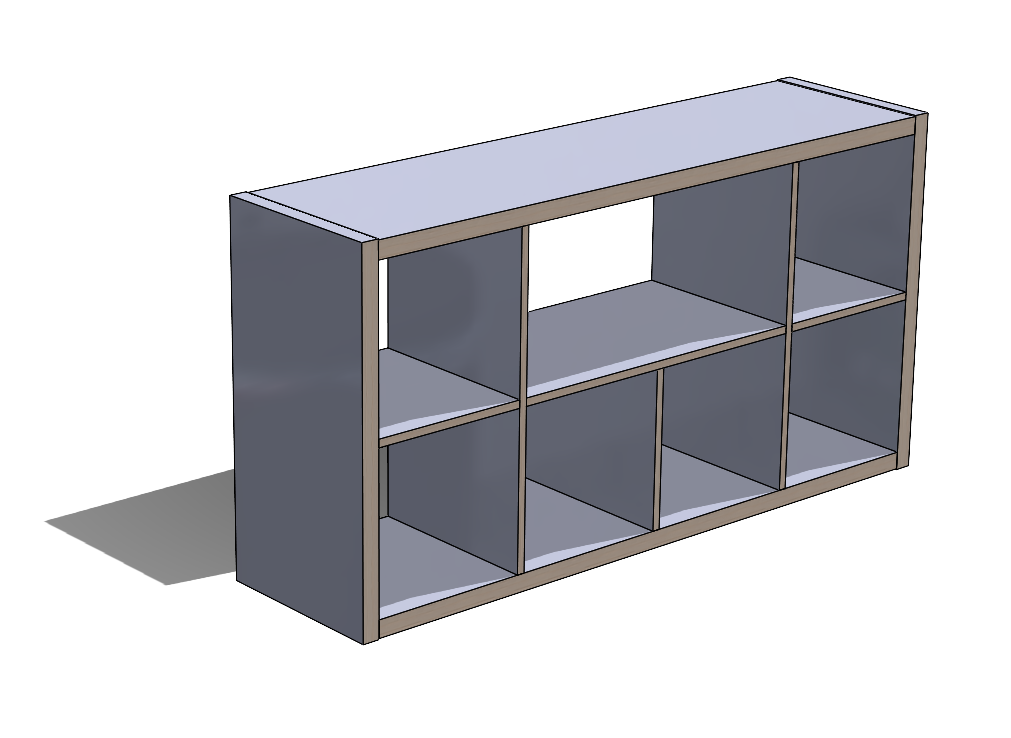 That already looks great!
That already looks great!Thanks! Ok that’s one vote in for the wooden box route.
Hey everyone – excited to share some recent thoughts on the center channel idea. I think its time this concept finally turn into a project.
Recently my partner and I moved to a new house and our new AV room could really use a nice center channel. I have a few extra Pentas kicking around so I think its time to start building one of these.
I plan on designing this to fit a pair of cells(?) in the Ikea Kallax shelf (4×2 unit). This spot used to be occupied by the AVP and BL4K that I previously used as a center channel. I don’t think its going to take up the entire 690*335mm opening (although it could!) but it will probably take up most of it.
Before I start modeling the 3D on this, I wanted to open it up for a discussion. I want to design something to share, hopefully something that could be replicated by others interested in this project (first as CAD and then likely a 2D drawing pack).
In my mind there are two ways this could go:
- Traditional wooden box architecture, cloth fret.
- A more penta-like solution. Something 3D printed (sturdily) that has the spirit of the Penta cabinet geometry baked into its industrial design.
Both of these ideas have there advantages and disadvantages but I wanted to open it up here for a discussion as I want this to benefit as many people as possible. I think many B&O fans would enjoy having such a speaker in their system. Maybe two variants get designed after all? My dream is that it is eventually driven by a remote BL Penta (150/200 style) amp that sits in one of the other shelf cells.
I was brainstorming all of this and doodled this in my sketchbook today. I hope it inspires you to share some of your thoughts.
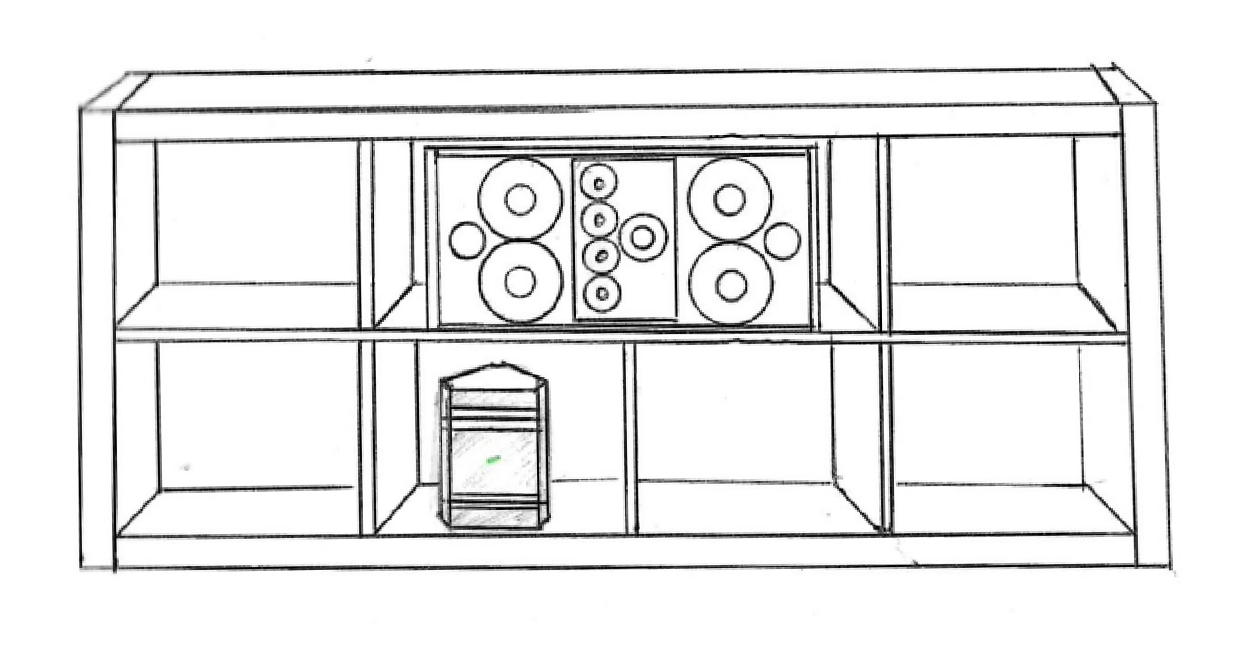
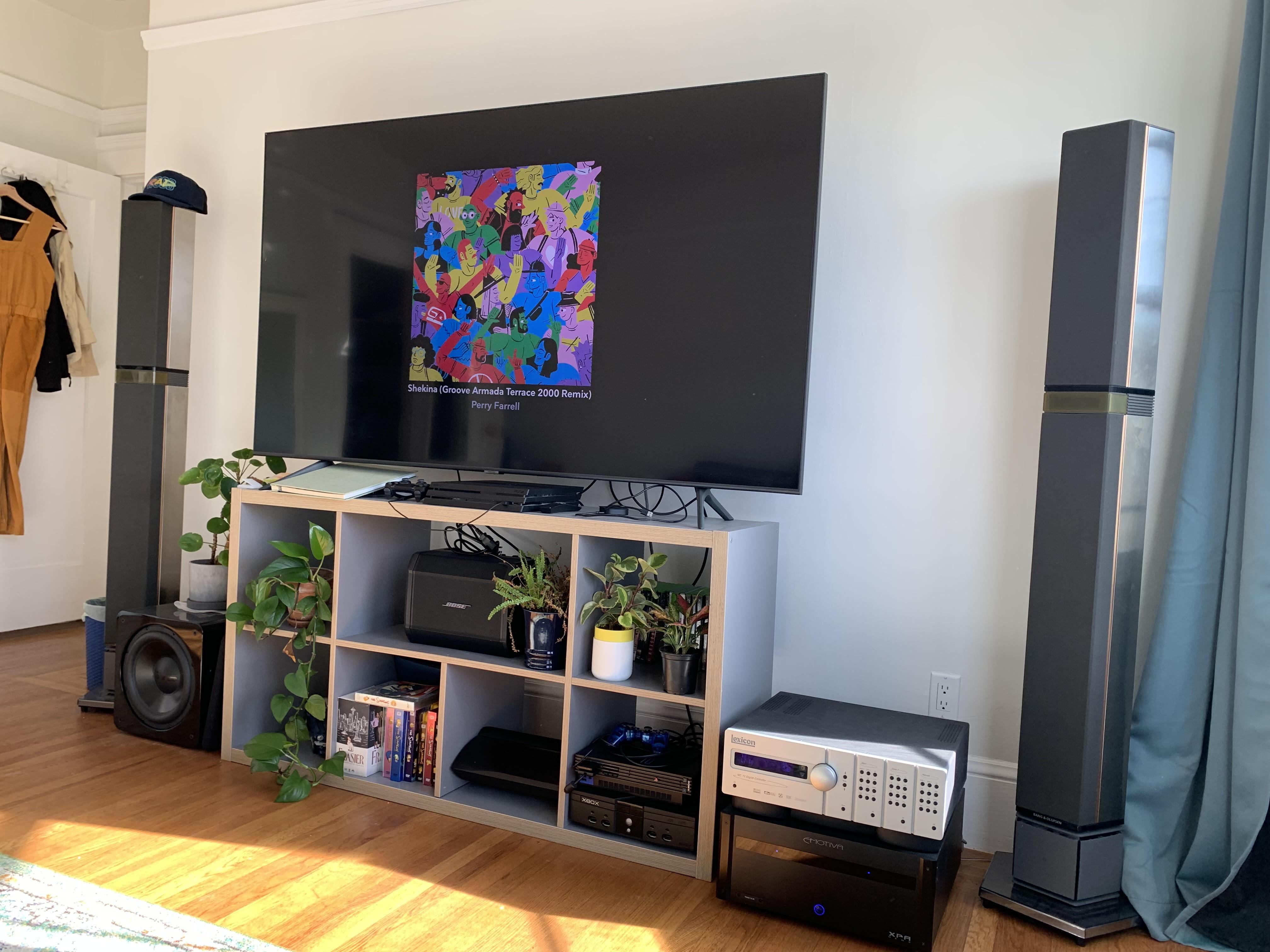
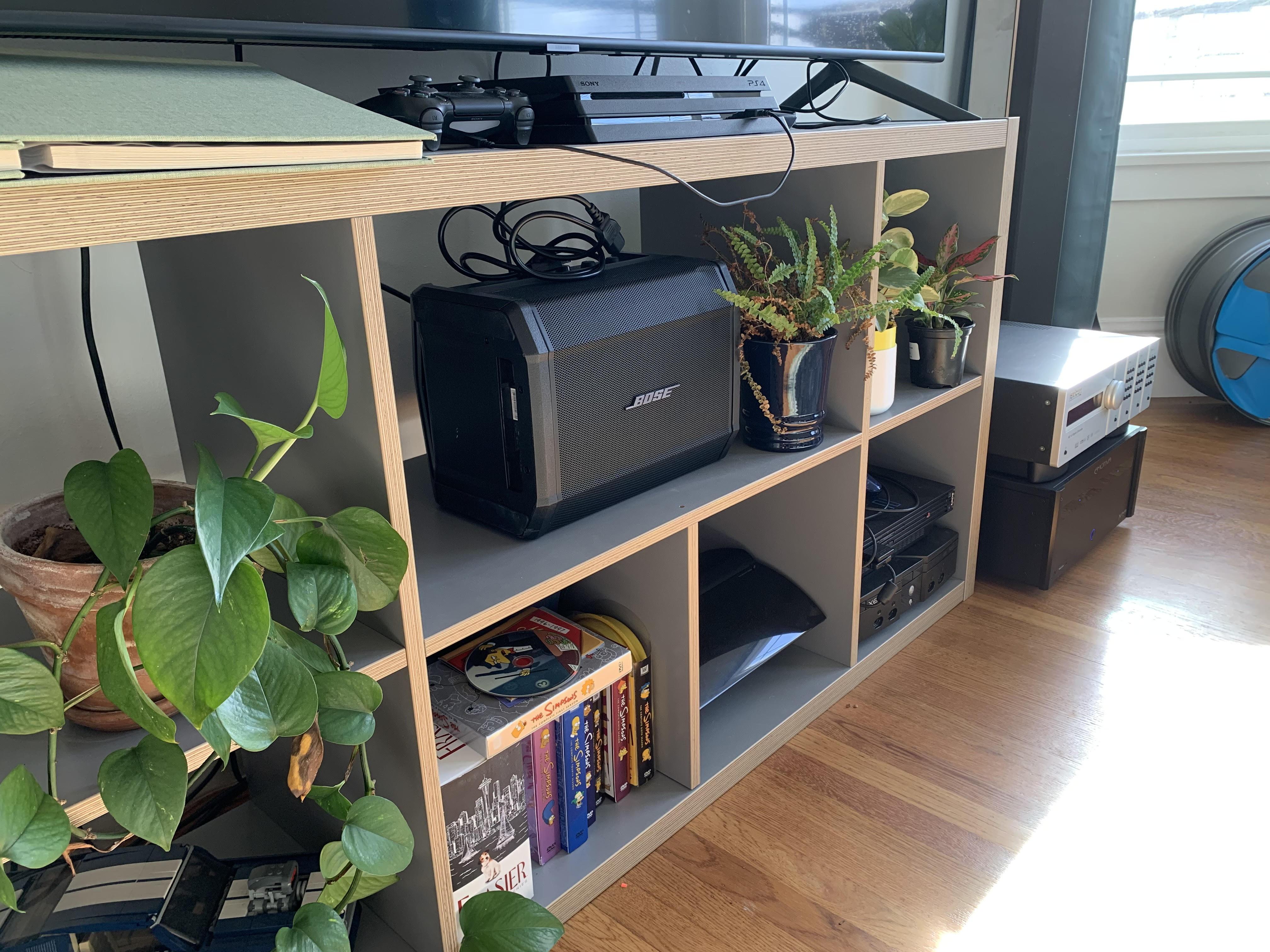
The Beovision 9 is in fact extremely easy to disassemble, by far the easiest of all B&O TVs. The heaviest part ist the plasma panel, which ist attached with a few screws and connected to the Beosystem 3 only with a DVI connector and the mains cable. It took me around an hour to disassemble, transport and reassemble the unit within my house. The panel can be carried by one strong person or two guys of average build, as can the housing with speakers and Beosystem 3. I strongly recommend going this route.
Wow – did not expect this as a practical option. Why aren’t more people talking about this? If I had known this, I would have been shopping a BV9 vs what I could move up the stairs at my old flat!
Hey UK BeoWorlders – I turned down a trade-in offer recently but I thought it might be interesting for those of you on here.
A dealer in London (Islington) recently messaged me about a promo that would give me 13400 GBP for my pair of BeoLab 5s towards a new pair of 50s/90s. If you want to know more I would suggest calling up Rohan at B&O Islington London.
I have a set of pentas to refoam yet, but likely wont be until mid-24 until I get around to it.
I will definitely be using foam surrounds on them and will toss one on the Klippel machine here to measure purely out of curiosity. If anyone has a rubber-surrounded mid they’ve made, I would be happy to measure it then return it.
Compare the T/S parameters of a driver restored with foam to one restored with rubber (both played in to losen up the stiff new surrounds), and you will no longer have any doubts. I did exactly that. I was expecting a difference but… oh dear, was I surprised. Foam! Martin
Cool idea, Martin. Are there measurements you can share?
Would be interesting to throw them on klippel to do a deep dive and show the measurements here.
Evan
December 2, 2023 at 2:51 am in reply to: Happy 98th Birthday B&O! Special Beolab 8 gift to be won… #26829Congrats, Wilson! Absolutely knew that was a contender (and I didn’t even notice the BL5 right away!). It also may have inspired another BeoTattoo but that is still under review 😀
Having had time to finish the lengthy video (good thing) I wanted to come back and say the best part of all this was his final observation – the awesome network built up around B&O. That is something truly unique about the brand – great community and support.
Also have to admit I learned a few things. Haven’t seen the “CD ALL” button before, I guess I haven’t looked too closely at the 3200 before! The automatic door open feature when there is no CD present was new to me as well. I was very excited to test on my Century when I arrived at the office this morning – can confirm it does the same! However only on the device, not with Beo4.
What an incredibly complex (but exciting!) topic to discuss. Honestly I’m surprised it hasn’t come up sooner. What a great thing to investigate further as well. It would be great to hear from B&O and how some of the designers have worked with this as it has somehow been protected and coordinated very well over the years.
The logic is much deeper than most people realize.
I think the “GO” topic is important to separate here as it is more than simply a “play” button. It is more like an “enter” key especially when using a BV or more complex BeoSystem etc. However in many situations it isn’t actually needed. As soon as a CD is loaded for example, all you need to do is select “CD” on the device BS/BM/Beo4 or otherwise and it plays, activates the speakers and configures the system for that function. This is one of the many simplicities I appreciate about B&O’s approach here. All I need to do is press V.MEM and I can have the Apple TV showing on my BV and off I go! Same for other sources in the system.
There is some strangeness in the B&O remote / button ideology. For instance “STEP” instead of “next” / “previous” etc. but I think its important that good UX design is not simply refining existing ideas norms and going along with what the rest of the world is doing and has been doing for decades.
Its honestly hard to imagine that there is really only one company who has actually gone in a different direction from the norm and attempted to innovate.
The more I live with and use a Beo4, the more it becomes one of my favorite pieces of design ever. It has exactly the kind of balance I strive to put into my own work. Just the right amount of playful design / sculpture that is memorable (and possibly overkill) but also plenty of logic and agonizingly streamlined simplicity.
Hello Evan: Yes the charging base can be converted to run on 120. The primary of the transformer actually has two windings. For 24o, the windings are placed in series which is how yours is wired. To make it run on 120, you will need to unsolder the primary lugs from the transformer. T Lift them off and fold them over onto the other side of the PCB so that it bypasses the traces which connect the windings in series. Then you can connect the windings in parallel. You can also cut the traces on the PCB, but I prefer modifications that are non-destructive and can be reversed. Derek PS: I’m in SF as well!
Hey Derek,
Finally getting back to this topic. Here is the bottom of the PCB for the table charger. Can you show me which lugs to “disconnect”?
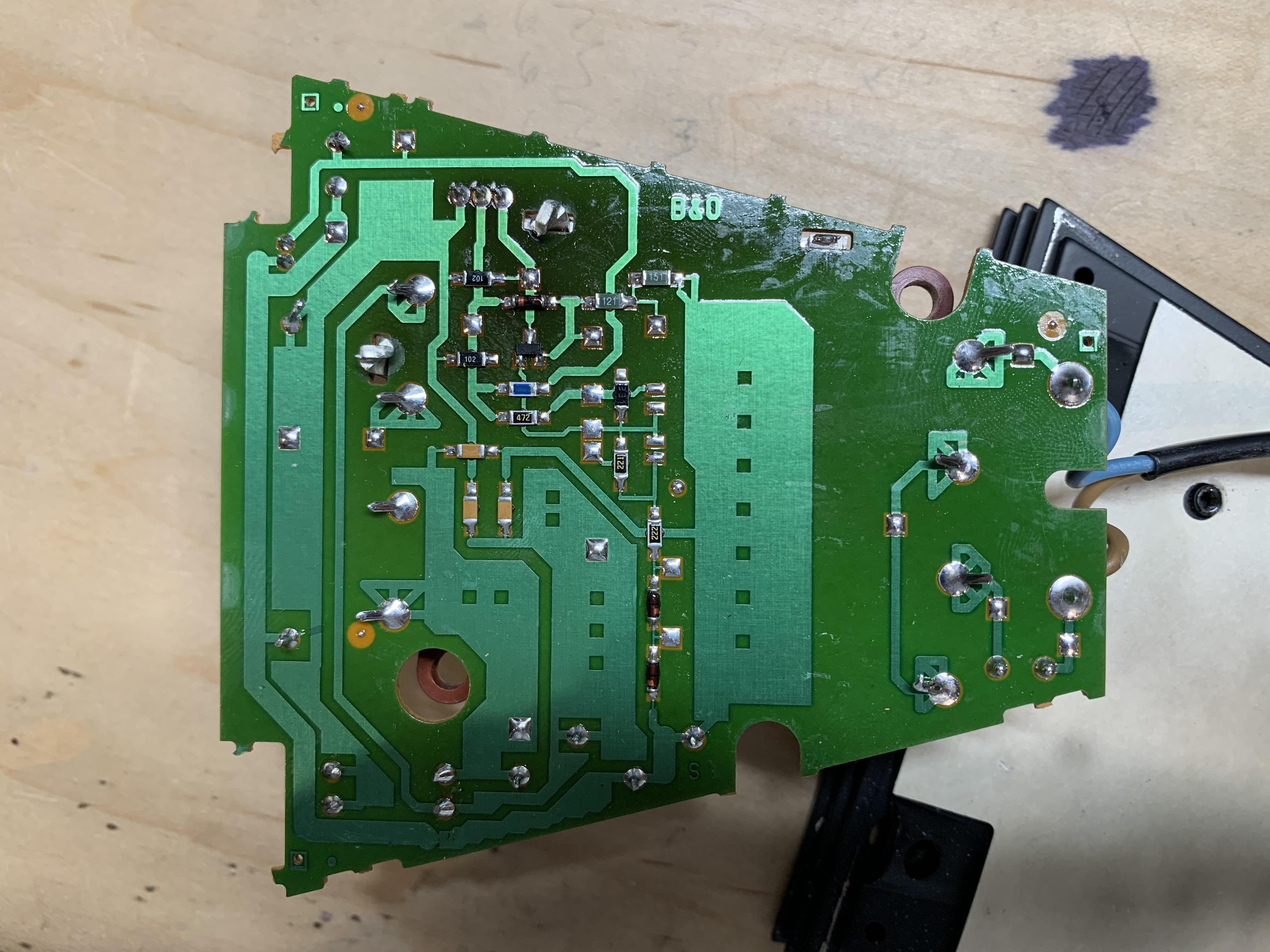
Thanks,
EvanThey’re certainly ‘cosy’ inside!
The packaging is so impressive. Still blows my mind!
I have 4 of these amps to go through yet. I’m equal parts excited and terrified to ‘go back in’! 😀
Hey Derek – Thanks for the info! No worries, there won’t be any traces cut here.
I’ll add another photo of the bottom, it seems like there is a trace that can be broken intentionally underneath (there is a pair of joined solder pads). This path runs under the transformer from what I remember, however I could be mistaken. I’m on vacation right now but will add a photo and try to identify the spot on the schematic when I return home.
Glad to read there are other BeoWorld members in SF!
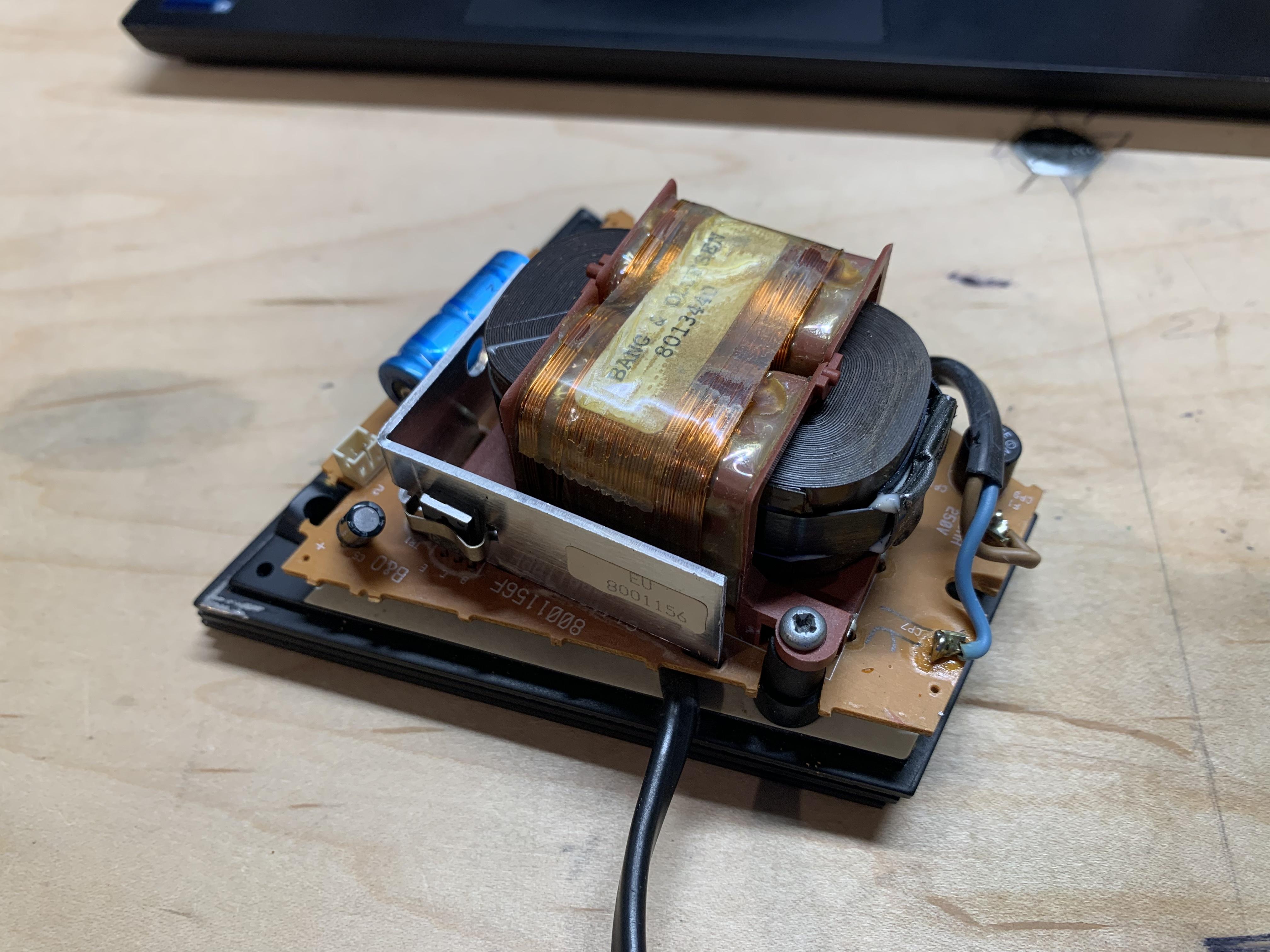
Hey everyone – I am slowly getting my Beo gear acquired in the UK/EU moved back to the US. The first to arrive was my BeoLink 7000 and charging base.
Is there a way to convert to 110VAC for use in USA? Service manual and a look inside the base themselves don’t offer an obvious method for doing so.
Thanks!
Up-firing speakers can be weird beasts. Honestly speaking it would be really interesting to see how a design and technology driven company like B&O would tackle the segment of floor stander w/height or an add-on height speaker.
When you consider directivity, occlusion and the other odd requirements of height speakers (of the “reflected” type), you end up with really fascinating mechanical implementation and I’m sure B&O could make it into something interesting.
Never say never!
- AuthorPosts
